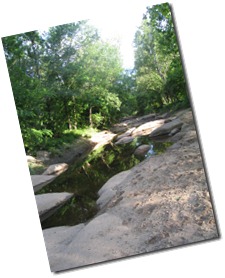
Thank goodness our neighborhood pool opened up! It is already so hot here for this time of year...
Before it gets to the point of running from one air-conditioned place to the next this summer, I wanted to write about a cool place to take your kids that is kinda enjoyable for moms, too!
Check out the Columbia Canal Riverwalk. Because I love history, this is a great place to walk around and explore...Take a picnic and eat it on a big rock in the middle of the river!
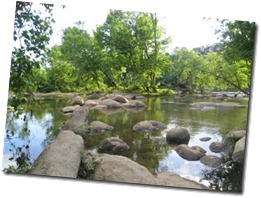
Back in the olden days, everything was pretty much based around the water... before mass transportation, the river was the only way to move supplies and products to and from villages.
 In South Carolina, we have a bunch of rivers and canals! The state used the labor of Irish immigrants in 1824 to build a series of canals to connect settlements in upstate South Carolina with the Midlands.
In South Carolina, we have a bunch of rivers and canals! The state used the labor of Irish immigrants in 1824 to build a series of canals to connect settlements in upstate South Carolina with the Midlands.From Wikipedia:
"In 1820, construction started on a canal to navigate the rapids where the Broad River and the Saluda River form the Congaree River. It used a natural ravine that was between the City of Columbia and the Congaree and Broad Rivers. The canal started between Lumber (currently Calhoun) and Richland Streets. It ran along the Congaree for about 3.1 mi (5 km). It ended across from Granby Landing just north of the current railroad bridges across the Congaree. The canal was completed in 1824. It was 12 ft (3.7 m) wide and 2.5 ft (0.8 m) deep north of Senate St. South of Senate St., the canal was 18 ft (5.5 m) wide and 4 ft (1.2 m) deep. It had an 8 ft (2.4 m) wide towpath on either side. The canal had four lifting locks and one guard lock for the 34 ft (10 m) descent of the river. A diversion dam was built across the Broad River to allow access from the Saluda Canal. There were three waste weirs to prevent flooding of the canal.
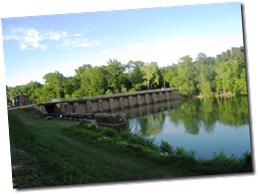
A separate canal, which was called Bull Sluice, was constructed north of Columbia Canal on the Broad River, This ½ mi (0.8 km) long canal had one lock. The 1891 canal extended the Columbia Canal upstream of Bull Sluice.
In 1840, the State of South Carolina dropped its subsidy of the canal. In 1842, the railroads came to Columbia and the traffic on the canal decreased. During the Civil War, the hydraulic power of the canal was used to make gunpowder. Mills that used the canal for power were a grist mill run by the State Penitentiary, another grist mill, and a saw mill.
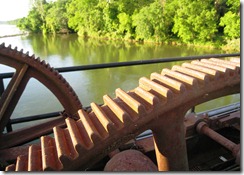
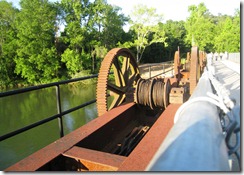
Portions of the 1824 canal south of Gervais St. survive today. Also parts of the Bull Sluice canal remain."


